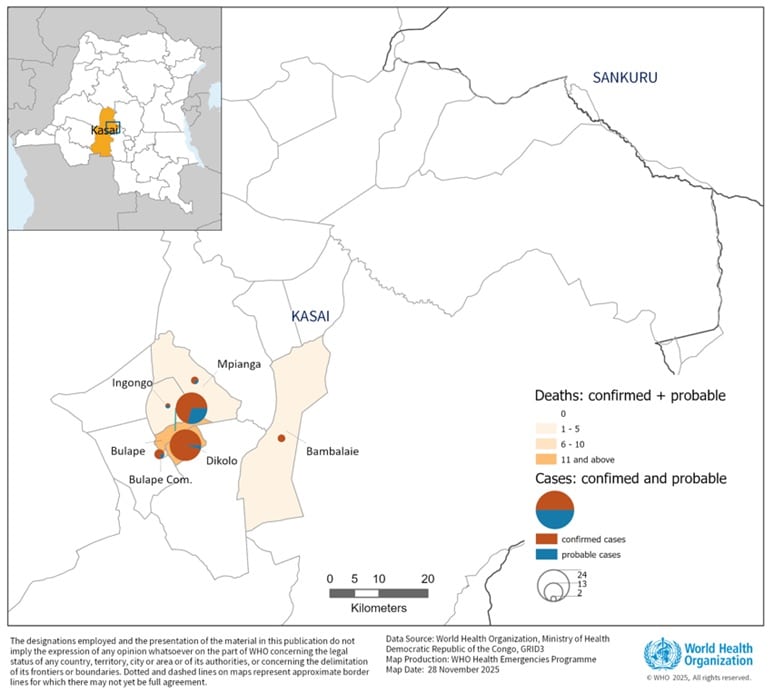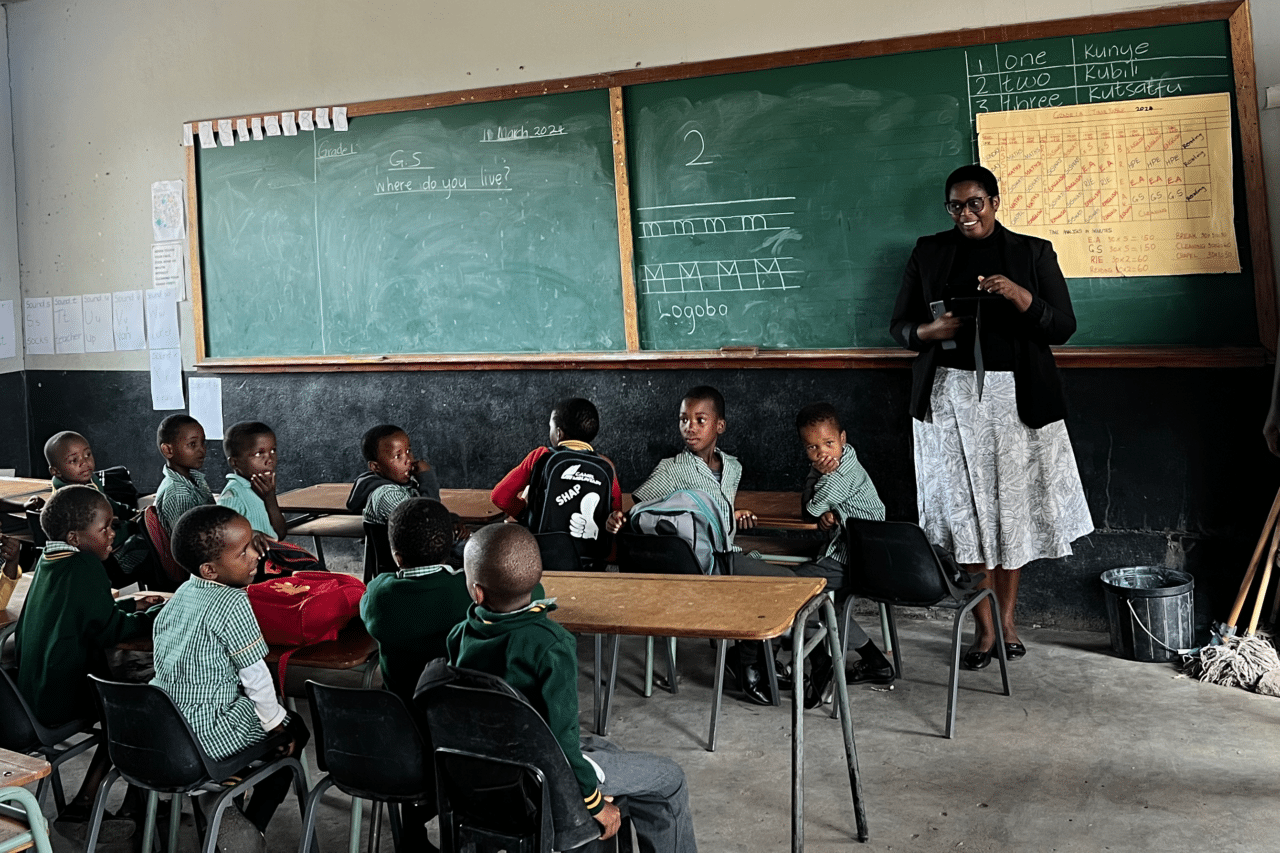
Strengthening school management and data reporting in The Gambia and Eswatini
Eswatini and The Gambia have adopted the DHIS2 SEMIS App to transition from aggregate to individual-level education data, providing more granular information in close to real time.
Governments around the world rely on data to make decisions about their education systems, with the quality of those decisions linked closely to the quality of the data itself. From student and staff daily attendance, to academic performance results, school transfer information, and more—having access to timely, accurate, individual-level education data supports education planning and delivery at all levels. In Eswatini and The Gambia, education leaders have begun using DHIS2 and the SEMIS App to transition from paper-based and aggregate data reporting to near real-time, individual-level education data.
In The Gambia, where DHIS2 had been used as the national health management information system since 2009, the Ministry of Basic and Secondary Education began customizing DHIS2 for education data in 2018 with support from HISP WCA. In Eswatini, the Ministry of Education and Training (MoET), with support from UNICEF Eswatini, embarked on a project with the HISP Centre at the University of Oslo (UiO), HISP Uganda, and HISP Mozambique to configure and deploy DHIS2 for Education in 2020. In 2023, both countries launched pilot projects to implement the SEMIS app for individual-level data and student records, building on their prior successes with DHIS2. Early reports indicate that SEMIS is user friendly and responsive to school needs, supporting ongoing efforts related to reducing teacher and student absences, streamlining student record management, targeting support for at-risk students, strengthening cross-domain collaboration, and more. This progress is especially noteworthy on the African continent, where, according to UNESCO, the Association for the Development of Education in Africa, and the African Union, more than three quarters of countries do not currently have sufficient data to monitor education outcomes.
“SEMIS is a very good tool to have at the school level. (…) Enrollment is much easier, and it is very reliable.” Zweli Mayisela, SEMIS implementation data team member, Charles Wesley High School, Eswatini
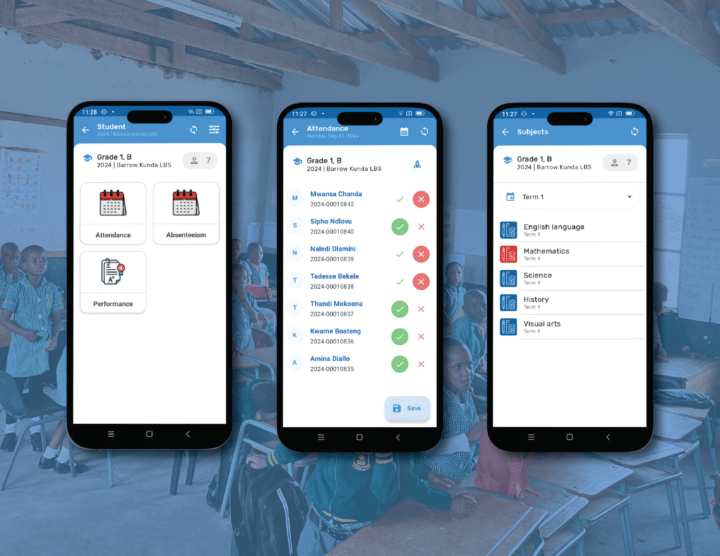
SEMIS: A holistic solution to student, staff, and school management
The SEMIS App is a student-staff-school suite of tools, developed through ongoing collaboration with HISP groups and Ministries of Health in the global south. Designed to support countries to fulfill core requirements for enrolling and managing students and staff, its functionalities are focused on planning the academic year, managing routine activities, and completing end-of-year processes. SEMIS enables staff to take attendance quickly and intuitively—both on the web and via offline data entry on Android mobile devices—and facilitates education transactions such as promotion, transfer, and graduation processes, and managing learning assessment data. With SEMIS, schools can register new teachers, assign unique identifiers, and support posting at regional and national levels, and the app can be configured to monitor teacher appraisals and identify professional development needs as well.
SEMIS is essentially an implementation of the DHIS2 Tracker app, but specifically tailored for education use cases, and with an adaptable data model for use in different contexts. “We created a platform that can be used to plan, enroll students, update teacher details, take attendance, record marks for evaluations and exams, promote students to a new grade, and other activities,” said Alfred Muchanga, head of the Systems Development Unit for Saudigitus in Mozambique, and a key member of the SEMIS development team.

In addition to its use for academic planning and routine management, SEMIS supports the decentralization of education systems by integrating data from disparate subsystems. It enables access to granular and aggregated data for improved decision-making processes, from the central office all the way down to the school level. It integrates easily with existing data systems and enables collection and analysis of longitudinal individual data for learners and staff throughout their entire academic experience. SEMIS is being continuously refined and improved by users around the world, and the fully customizable DHIS2 platform allows ministries and implementing partners to extend its functionality and integrate it with other tools if desired.
The Gambia: A shift to individual-level data, driven by experiences using DHIS2
The Gambia, which has used DHIS2 as a national health management information system since 2009, launched an initiative in 2018 to expand its use of DHIS2 to the education sector as an EMIS. With support from Norad and GPE KIX, the Ministry of Basic and Secondary Education (MoBSE) worked to customize DHIS2 for education data in 2019, and then began the shift to individual-level data in 2020 with a system based on DHIS2 Tracker. According to Seedy Ahmed Jallow, with the MoBSE, the necessity of this transition became evident when the country used DHIS2 to plan for schools to reopen after more than a year of COVID-related closures.
The ministry used DHIS2 to successfully analyze its data and prepared to reopen schools. “We were able to model, and not only know how many classrooms were needed, but also the infrastructure, the number of additional teachers to be trained, financial constraints, and everything else,” Jallow said. However, when education officials requested public buses to safely transport students, they were faced with a critical lack of information—they did not have individual-level data about where the students lived. “We realized we knew almost everything about the schools, but we didn’t know the first thing about the students themselves,” Jallow said. “Because of that, we missed another six months of learning.” With determination to prevent this type of situation in the future, The Gambia continued its work toward individual-level data in the education sector, in collaboration with HISP WCA, HISP UiO, and other partners.

In 2020, the MoBSE entered more than 300,000 student records with unique IDs into its EMIS, implemented an SMS-based daily attendance app for monitoring teacher attendance, and digitized the School Report Card. In 2022, it launched a preliminary version of its Tracker-based EMIS in two schools with 5,500 students and 200 teachers in 2022, and the ongoing customization and feedback on the system then informed the collaborative design of the SEMIS app in 2023. When the DHIS2 for Education technical team demonstrated its SEMIS app at the education conference that August, The Gambia saw the obvious benefits—like bulk promotion and other features not available in its existing Tracker-based system—and quickly began implementing SEMIS.
Jallow said that adopting DHIS2 and the SEMIS app for education data was an obvious choice for The Gambia because of the very low relative cost of implementation, and the capacity for local ownership. “In order to scale, we really need to make sure that these interventions are sustainable, and that is one of the reasons we went with DHIS2,” he said. “The kind of vendor lock that other countries find themselves in—we are very pragmatic about it. We don’t want to find ourselves in that kind of situation.”

Eswatini: Supporting a national PIN-based system for government services
In June 2020, Eswatini’s Ministry of Education and Training (MoET) began working with HISP Uganda and the HISP Centre at UiO, with support from UNICEF Eswatini, to create an EMIS based on DHIS2. The country had previously relied on a centralized, digital EMIS that was managed by the Ministry, but it no longer met the country’s needs for decentralized data entry or tracking indicators for priority areas. During this time, Eswatini’s government had also moved to a national PIN-based system for all services, which necessitated individual records for learners in the school system. In late 2021, the MoET launched the DHIS2-based EMIS for aggregate and individual data collection in 100 schools across the Manzini region, and then expanded to include all schools the following year. An assessment in May 2022 showed broad stakeholder buy-in and ownership of the system, and the ongoing feedback from the field then shaped SEMIS development when the HISP groups began their collaborative design process in 2023.
With the introduction of SEMIS in August, Eswatini was one of the first adopters, launching a limited implementation in 10 schools in the Lubombo region in March 2024. “The pilot is ongoing,” said Nelsiwe Dlamini, acting EMIS manager in the MoET. She said the Ministry plans a full SEMIS roll-out to all schools in the coming months, citing the app’s bulk promotion capability in the Final Result module, and other features not available in the earlier Tracker-based system. “Imagine having to promote one learner (at a time) for schools,” she said. “With SEMIS, it’s easier.”
As the pilot moves to the next phase in October 2024, the ministry will launch SEMIS in an additional 50 schools, with training for approximately 200 teachers, something Dlamini said will be crucial for successful implementation in the country. “More than anything, we’ve learned that we need to train the teachers,” she said. In addition to basic SEMIS training, she said teachers should understand how they can use the data to inform school programming and planning, and that head teachers and regional users must understand their roles as data custodians as well. Looking ahead, Dlamini said the MoET plans to use SEMIS for cross-sector engagement with the Ministry of Home Affairs, the Ministry of Health, and others, through the national PIN-based system. “We can easily link to other systems to see, for example, if the learners are getting the services that the Ministry of Health is giving,” she said.
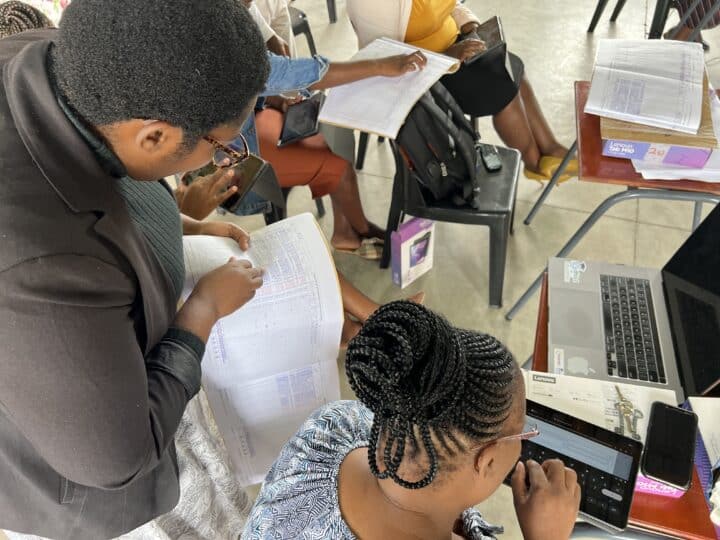
A collaborative approach to app design and education data management
SEMIS was created through collaboration between HISP groups in Mozambique (Saudigitus), Uganda, Sri Lanka, and West and Central Africa, and the HISP Centre at the University of Oslo (UiO). During the DHIS2 annual conference in June 2023, representatives from these groups met to discuss challenges with education management information system (EMIS) projects in their respective countries, and they decided to work together to develop a custom app to address the specific needs they were seeing in the education sector. By the next day, they had planned the app’s design. “We started from different isolated applications—each HISP group was working on strategies separately to solve local challenges,” said Muchanga. “We established a kind of DHIS2 for Education technical team, to see how we could join our activities and our strategies to build a solution that is common for all of the DHIS2 implementers.”
Together, the team worked to rapidly develop the app, aiming to share a demo at the DHIS2 for Education Conference and Academy in Uganda, just two months later. It was a big success. In the weeks immediately following the conference, The Gambia and Eswatini had already signed on to pilot the app in their public schools. “We are making history” by helping school leadership down to the lowest level, and moving beyond aggregate data, said Dr. Prosper Behumbiize, director of programs for HISP Uganda. Such rapid development was possible because of the inherent flexibility of the DHIS2 platform, as well as the HISP groups’ deep, firsthand knowledge of local and regional education systems.
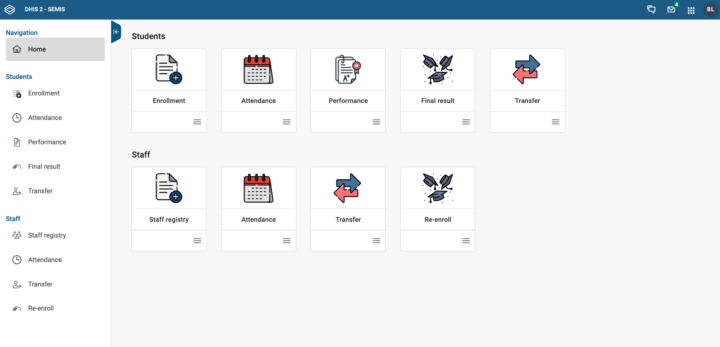
While still implemented as a pilot in Eswatini and The Gambia, feedback from the field informs ongoing work to refine and improve SEMIS. As development continues, the goal is to release additional modules using a standalone approach, making it possible to support either partial implementation in the education sector, or implementation as applicable in other domains. The Transfer module, for example, can be used to manage equipment and track the movements of various equipment items across facilities, and the Performance module has obvious uses in bulk data entry. “Any system that you want to implement, if you want to do bulk data entry, you can use this performance module—you can change the name to whatever you want,” Muchanga said.
Building on early successes and planning for the future
Jallow said the MoBSE in The Gambia had learned several important lessons during its transition to individual-level data. “SEMIS works, that’s the first thing,” he said. “Secondly, we need to prioritize the needs of the schools.” He emphasized the value of working directly with schools to better understand their challenges related to data, to ensure that solutions are tailored to local needs. The Gambia has continued its work toward data-driven education management, entering into an agreement in 2024 between the MoBSE, the University of The Gambia, and UiO, to design a demand-driven master’s degree program in education management information systems. The aim is to improve data management, utilization, and information systems strengthening through local ownership of global tools, standards and procedures.
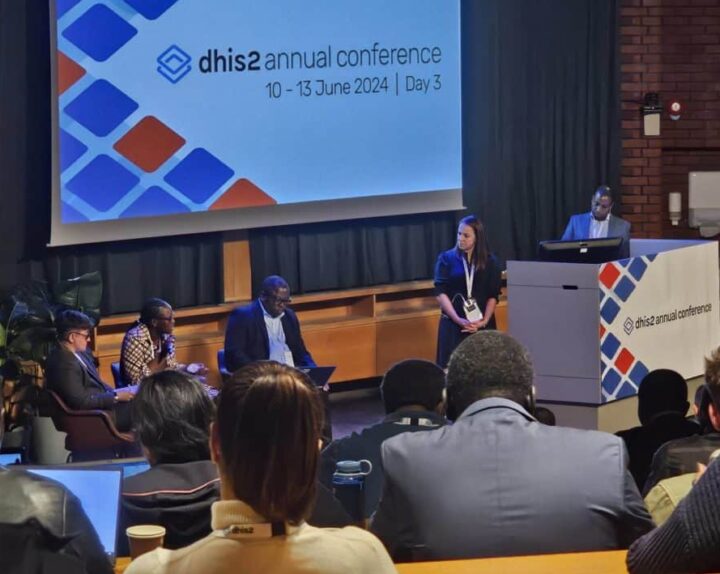
Dlamini highlighted the importance of individual-level data in the education sector as a way for governments to take a more holistic approach. “As countries, we should move away from the notion of just [tracking] aggregate information,” she said. “At the end of the day, we are dealing with humans that we have to be accountable for. (…) If a school says ‘we are providing services to 100 learners,’ who are the 100 learners? Are they attending? Are they getting the books they’re supposed to get? Are they getting the teachers that are qualified to give them the education? That’s the whole concept, to monitor that it’s being done,” Dlamini said
Both Eswatini and The Gambia will share additional findings in early 2025, as their respective SEMIS pilots move to the next phase. To learn more about implementing the SEMIS app, contact the DHIS2 Education team at emis@dhis2.org. Release notes are available for web and Android.
This impact story is based in part on the DHIS2 for Education presentations at the 2024 Annual Conference. Learn more.
